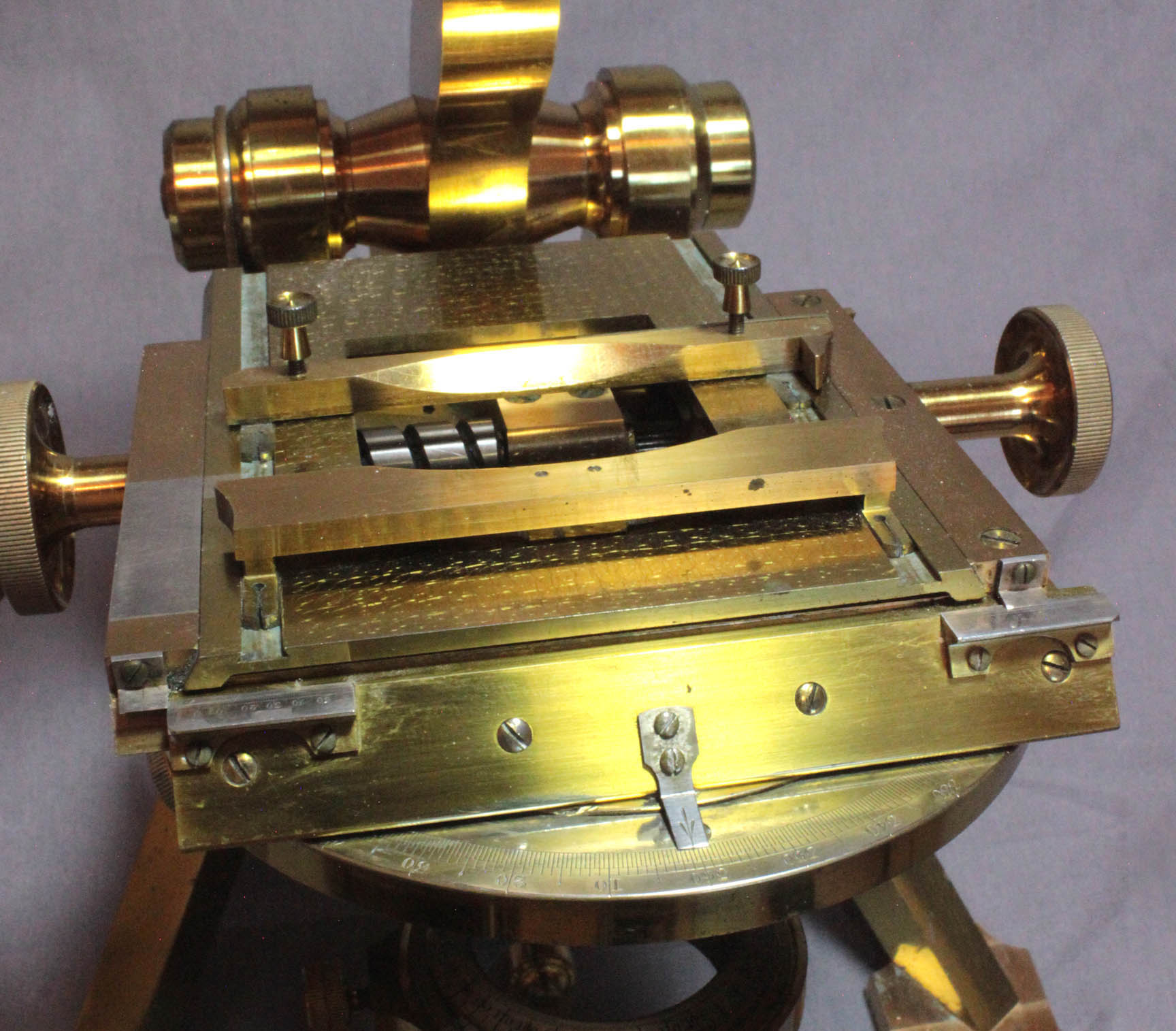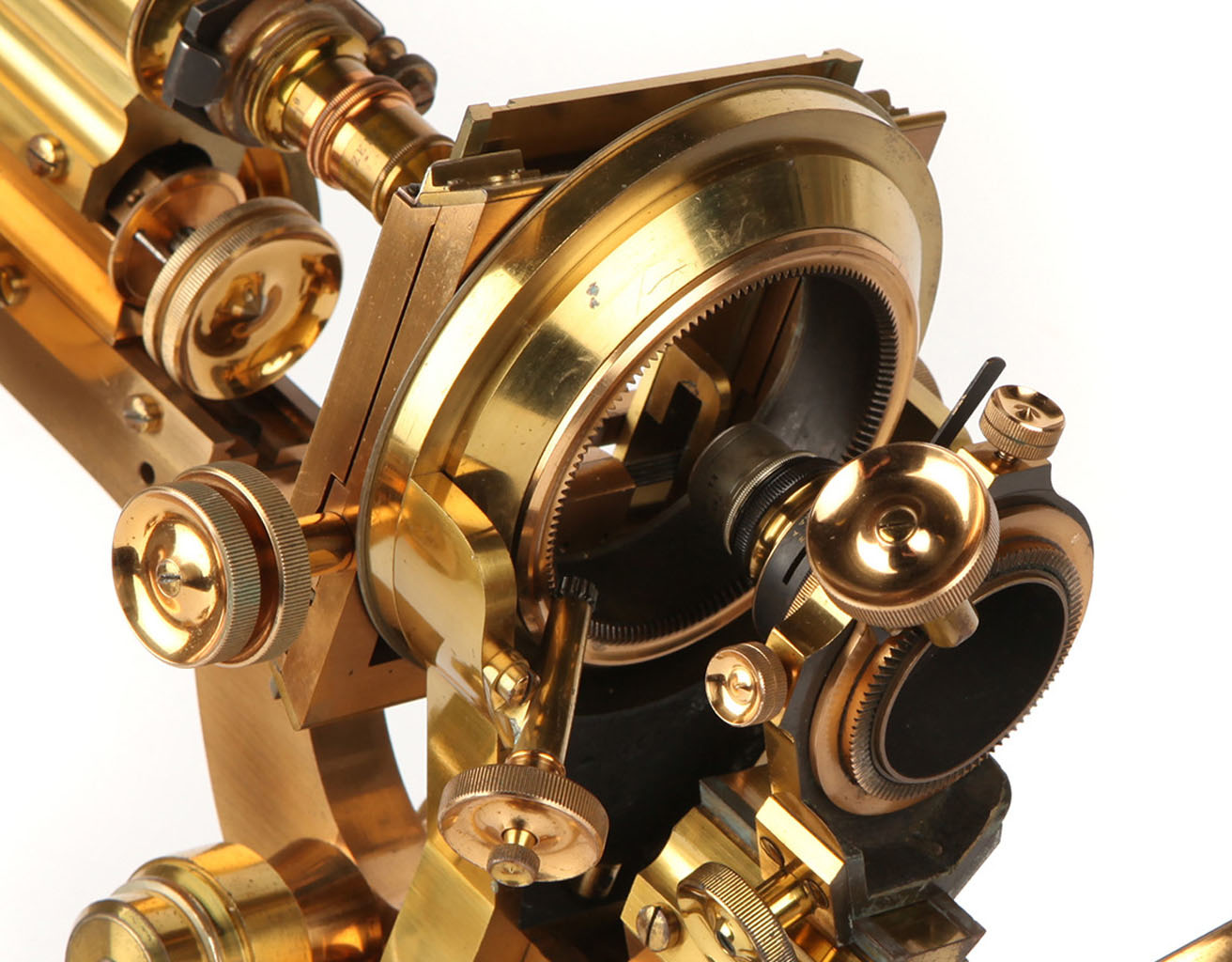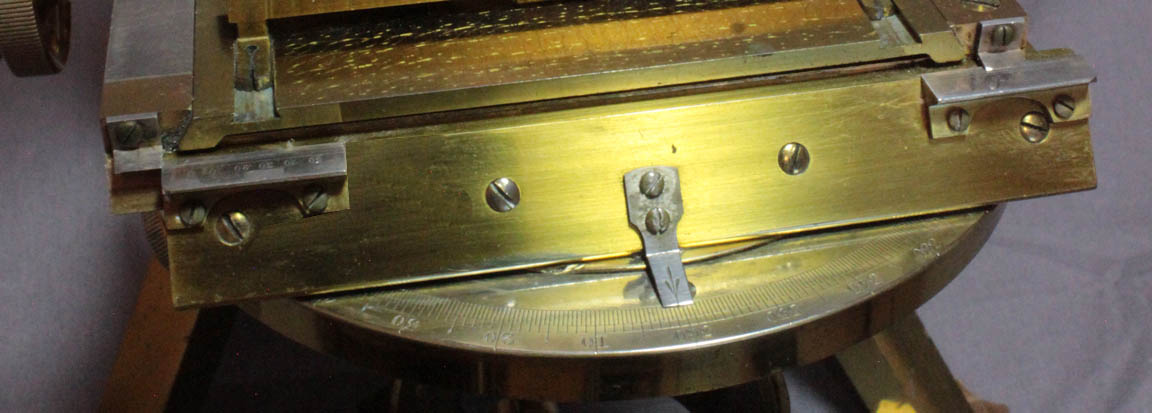MICROSCOPE
MAKER:Charles Baker Company
MODEL:'Nelson No 1a' or Nelson-Curties No 1
c.1900
SIGNED: 'BAKER 244 HIGH HOLBORN LONDON '
PLEASE SCROLL DOWN FOR ADDITIONAL IMAGES
THE MECHANICAL STAGE ON THE NELSON-CURTIES No 1a MICROSCOPE:
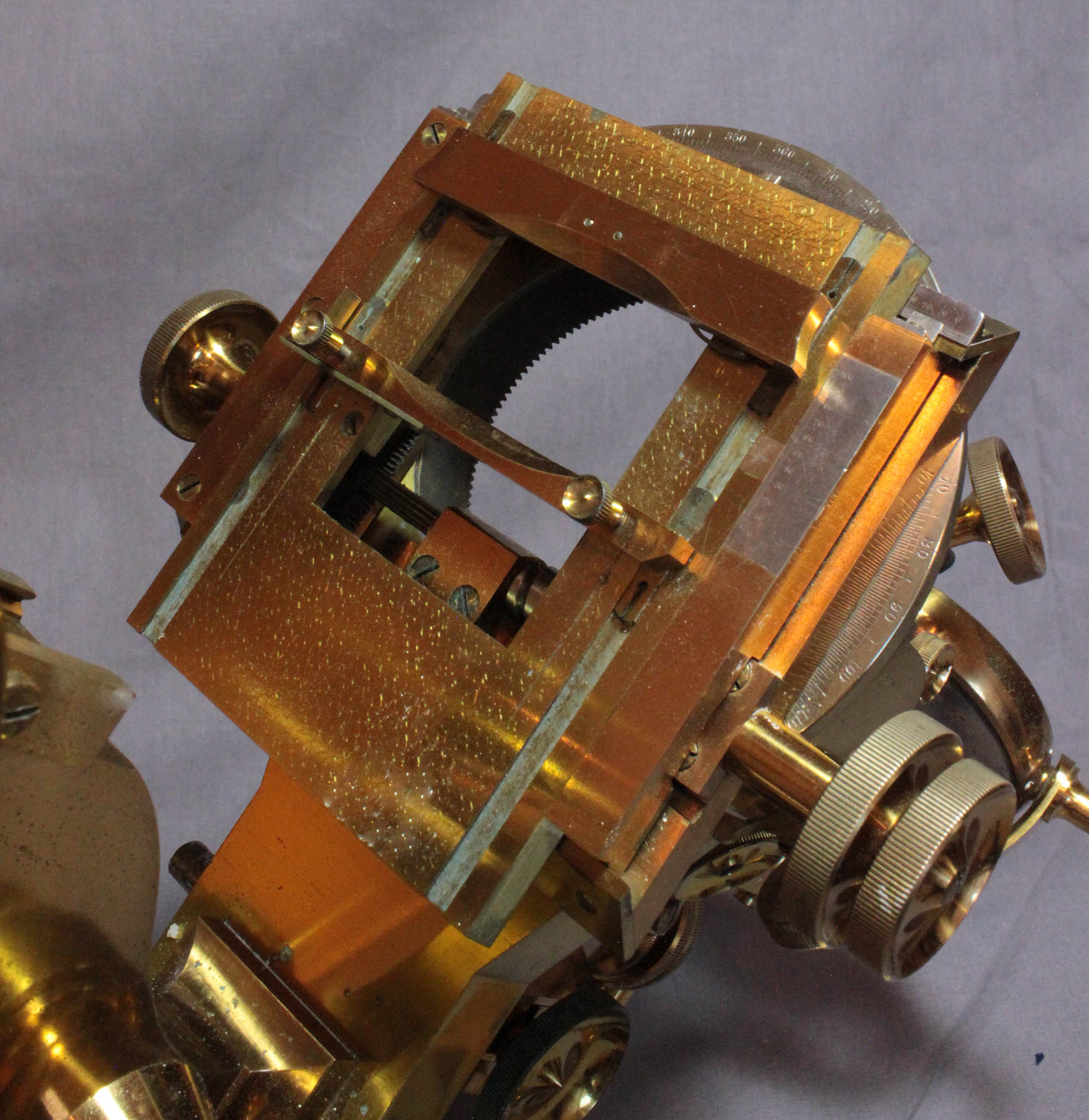
The large mechanical stage is constructed with controls and mechanisms on the same general plan as Powell & Lealand's No 1. It has full X-Y control via concentric knurled knobs to the side on the right, with only a single knob on the left. Two large slide rests on the top of the stage run in dovetail slots, with one having springs to grip the edge of the slide.
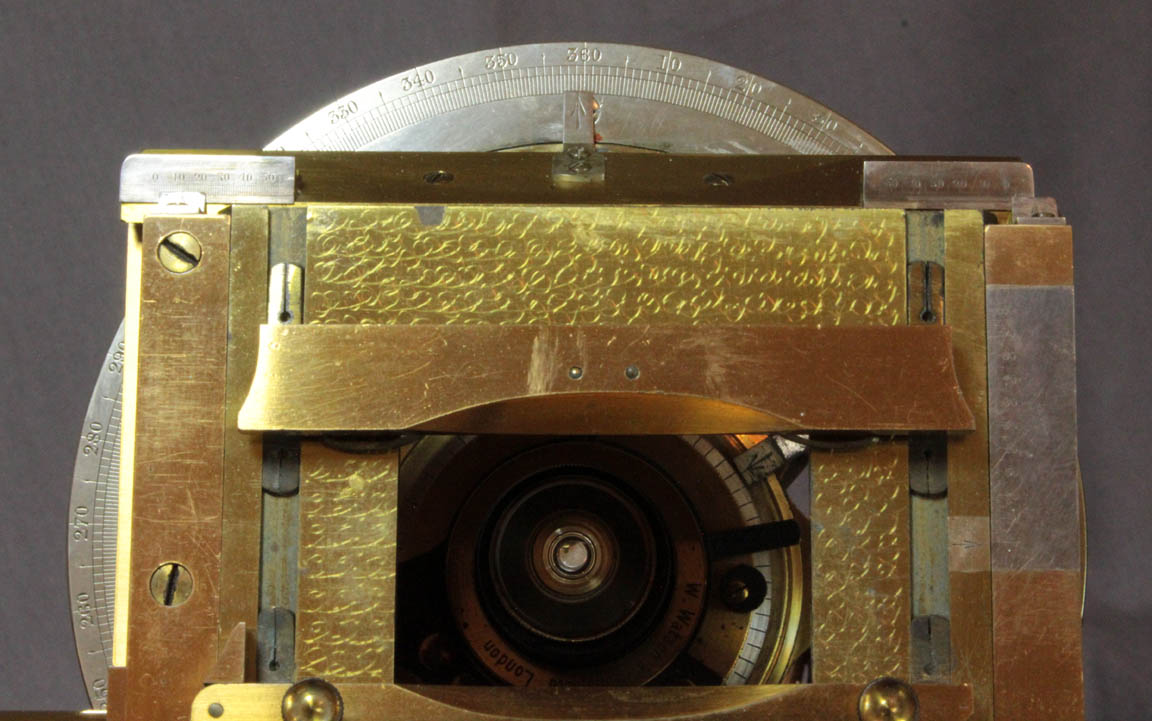
Nickel scales on the stage indicate the position of the X or Y motion, allowing the user to find a particular spot on a slide in the future. These scales are located differently than on the Powell & Lealand stand. For right-left(X-axis) movement there are two scales, one to the right front and one to the left front of the stage; the left side is used to indicate the slide position when it is moved to the right from the mid-position, the right is used when the stage is moved to the left. For movement in the Y-axis, a scale is located on the right side of the stage. A finely engraved, and relatively thick solid nickel(?) scale plate runs around the top edge of the round part of the stage, with an indicating arrow attached to the rotating stage; this is the same kind of calibration used for stage rotation on the P & L No 1.
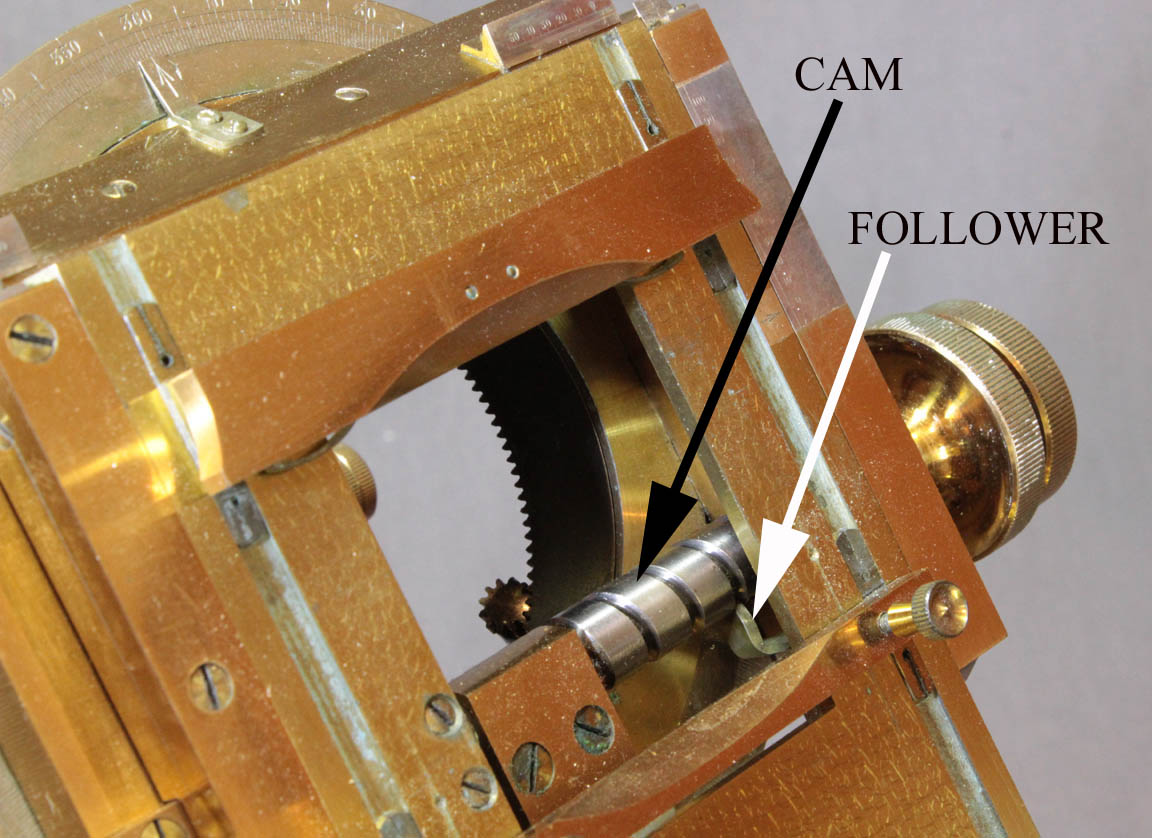
The X-axis movement is via a cam and follower mechanism, just like Powell & Lealand stands. With this design, as the cam is turned via the knurled knob, the follower, attached to the stage, moves the stage right or left. The Y-axis movement, again, like P & L, is via rack and pinion.
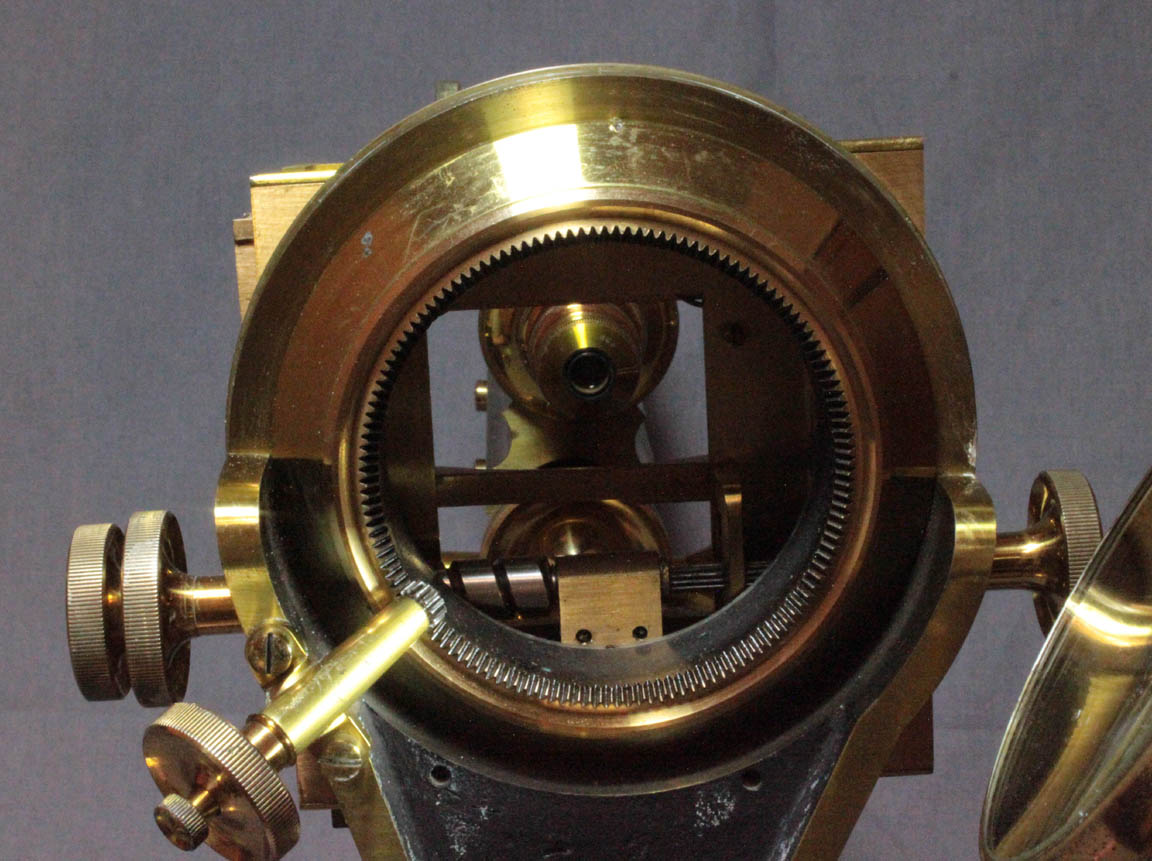
Below is a large bevel gear mechanism to rotate the stage again like Powell & Lealand's. The design of this stage, including the use of rack & pinion for Y-axis motion, and cam-and-follower for X-motion, as well as the angled control for stage rotation, which is permanently engaged, all bear a strikingly similar resemblance to the mechanism of the Powell and Lealand No 1 stand of the same era. One wonders if Charles Perry, formerly of Powell and Lealand, but by then working for Baker, had a lot to do with the design and construction of this stage, as he apparently did when working for P & L.
The stage rotation knob sits at an angle under the stage and has a smaller knob on its center, which can tighten the tension on this knob and when fully tightened, can lock the stage rotation position. When this knob is loosened, even with the pinion permanently engaged, the stage is easily rotated manually, but will stay in the position it is left in. There are no stage-centering controls.
